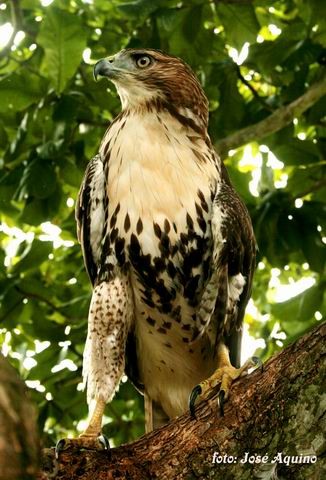Gundlach's Hawk
A species of Bird Hawks Scientific name : Accipiter gundlachi Genus : Bird Hawks
Gundlach's Hawk, A species of Bird Hawks
Botanical name: Accipiter gundlachi
Genus: Bird Hawks
Content
Description General Info
Description
The hawk is a medium-sized forest raptor. It stands between 43–51 cm in height and has a stocky body shape. The adult hawk has a dark bluish-gray upper body and wings, with a black head. The under body of the bird is a lighter color. It also has a striped tail that is rounded in flight. Immature hawks are mostly brown on the top and paler on the bottom, but with dark streaking down the body. Compared to other raptors such as the bicolored hawk, Gundlach's hawks are shorter and faster. 
Size
50 cm
Nest Placement
Tree
Feeding Habits
Gundlach's Hawk, a raptor, predominantly feeds on birds such as parrots, pigeons, doves, and thrushes, utilizing its large feet and long toes to grasp prey. Its hunting technique involves stealth and surprise, often during daylight hours.
Habitat
Gundlach's Hawk inhabits various forested habitats across broader tropical and subtropical regions. They dwell in low submontane evergreen forests, semi-deciduous marshy forests, forest edges, and forested coastlines. The species is not highly specialized, found in well-developed forests including pine, cloud, riverine, and dry evergreen microphyllous forests, in addition to tropical rainforests. Occasionally, nests are spotted in mangroves. Gundlach's Hawk ranges from sea level up to 1100 meters in elevation, occupying upland dense stands of pines at altitudes around 780 meters.
Dite type
Carnivorous
General Info
Feeding Habits
Bird food type
Distribution Area
Gundlach's hawk is found only in Cuba. At one point it was common to find them throughout the country, however, now they can only be found in five isolated areas. The bulk of the population exists primarily on the eastern half of the island, in the two larger population centers, with the other three smaller populations on the west side of the island. They are able to live in a variety of habitats up 800 metres (2,600 ft). These include humid, dry, and pine forests. It does not have highly specialized habitat preferences needing only forests to conceal its hunting approaches Its natural habitats are dry forests and lowland moist forests. The species was never a common sight, but its population was dispersed throughout Cuba. 
Species Status
Gundlach's hawk has been classified as endangered since 1994, due to its small and fragmented population. The past five years however, has shown a stabilization in the hawk's population trends. Population totals in Cuba were estimated to be about 400, including 270 mature hawks. This may warrant Gundlach's hawks to be reclassified as vulnerable. Perhaps the stabilization of the population can be attributed to conservation efforts that increase awareness of the hawk and its struggles. These conservation efforts include the public campaigning of Gundlach's hawk, the education of humans on the hawk and its environmental needs. Additional surveys of Cuba to assess current population and trends of Gundlach's hawk are required to determine the condition of the hawk in regards to extinction. 
